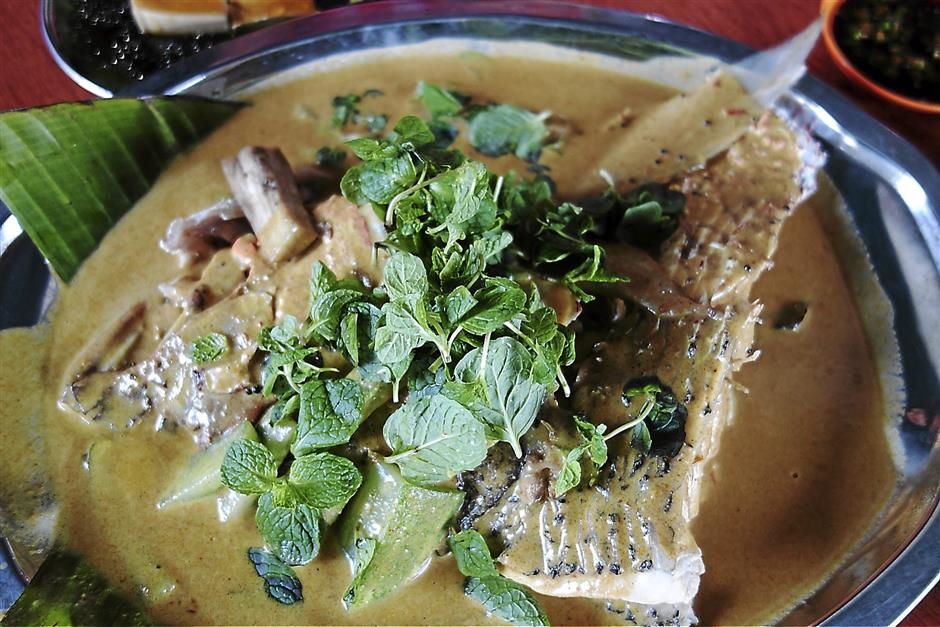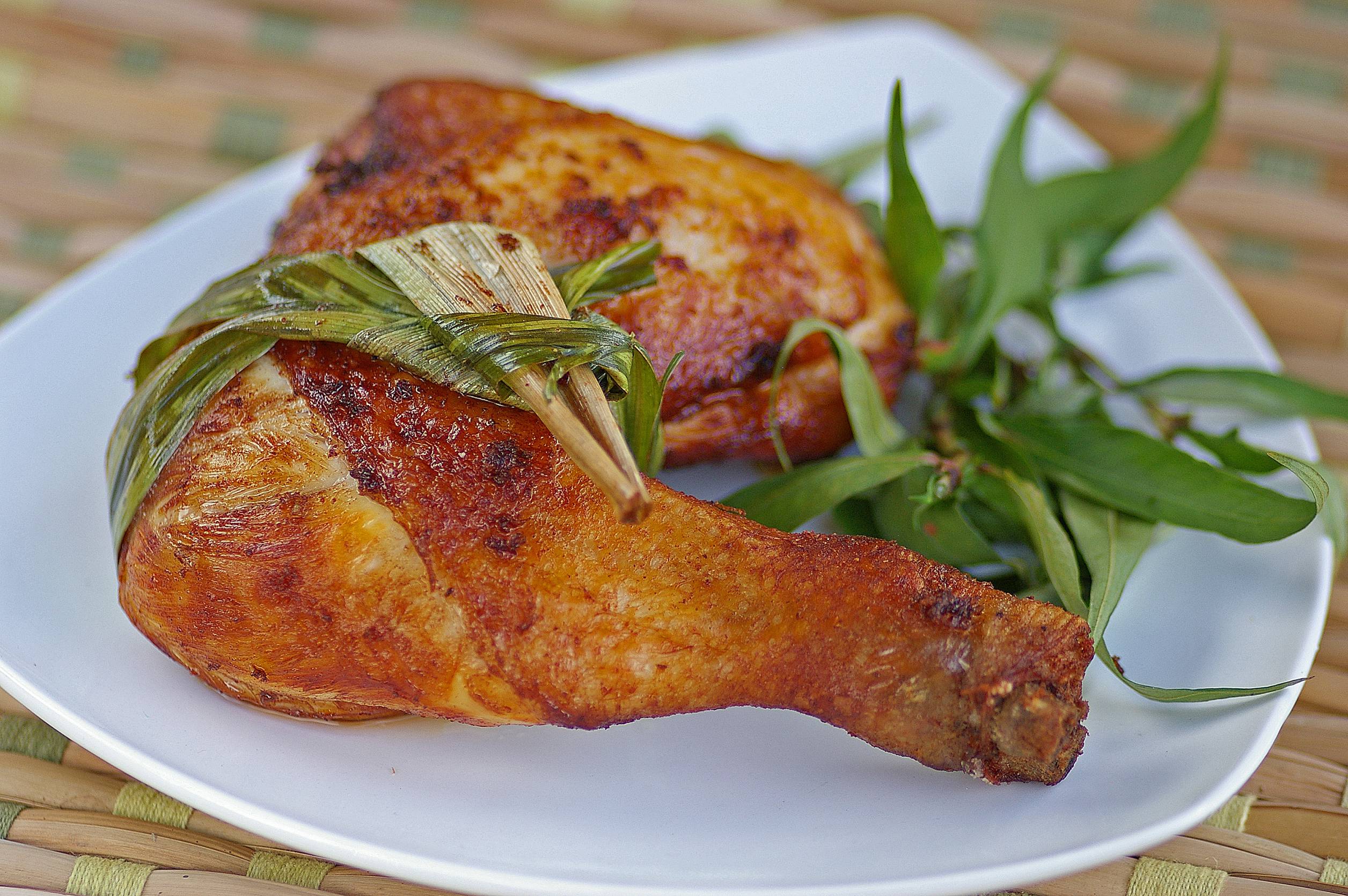Finding a gem of a fish head curry in Alor Star.
ORKID TROPIKA CAFÉ
Block DG8A, Taman Setia Jaya
Alor Star
Kedah
Open for lunch and dinner, closed on Mondays
IT was nearing lunchtime, and my travelling companions and I found ourselves near Alor Setar, Kedah, with no clue of where to go for a decent meal before we hit the long stretch of food-desolate wasteland that is the North-South highway back to KL.
With modern technology, it really wasn’t a problem. A search on the Internet using a smartphone informed us of a “must-try” curry fish head restaurant nearby. The GPS informed us it was just 2.5km away from our location. The mellifluous female voice on the smartphone GPS guided us to our destination, and when we missed the turning, unlike a human female, she didn’t lose her cool or chide us, but patiently guided us through the backlanes of a housing estate back towards our destination, crisply informing us to turn this way and that before the turn came up with unerring accuracy. One day, I’d like to date this woman.
Our destination wasn’t obvious, being located in a housing estate called Taman Setia Jaya. After we parked our vehicle, we had to ask at a nearby shop to find the target. It was a corner lot at the back of the shophouses, a small restaurant with no more than 10 tables scattered over the broad verandah. The restaurant’s odd name initially made us think we’d been misguided to a flower garden, but there it was: “Hainan Orkid Tropika”, with Chinese lettering advertising “Curry Fish Head and Inexpensive Stir-Fried dishes”.
The tables were all occupied, but we were fortunate that one was being vacated just as we arrived, which we quickly “booked”.
The menu was a single laminated card with a standard set of dishes, but obviously, the star was the curry fish head. Curry fish head is something of a Malaysian specialty, and the Indians and Chinese both have their version. The Chinese variation, which is most likely an adaptation of the original Indian dish, tastes distinctly different, and is usually offered in two flavours: sour (using asam, or tamarind, without coconut milk), and with coconut milk.
We sat, and ordered the curry fish head with a set of supporting dishes, to be taken with white rice. While waiting, our drinks arrived, the usual assortment of soft drinks and a home-brewed leong char or “cooling tea”, in this case, pat poh (literally “Eight Treasures”), which turned out to be a sweet and intriguing drink with slight overtones of sarsaparilla, and leong fun or black herbal jelly. It was so good I ordered another one right away.
The kitchen staff and waitresses operated like a well-oiled machine, which they no doubt were, as the restaurant has been operating for several years, and is well-known in foodie circles and blogs, also having been featured in the Chinese media. Our food arrived together with plates of hot, white rice, which was soft and fluffy, a perfect accompaniment to the food: first a small plate of clams of the variety the locals call kepah, then stir-fried green vegetables, and white soya bean cubes in sauce.
The kepah are bivalves like the more common and popular lala but are smaller with thicker shells, although collectively, they both belong to the same genus known as venus clams. The clams themselves are quite small but sweet with a slight fishy flavour. These had been cooked quickly with a sweet sauce, and they were fresh, and good for a nibble, separating easily from their shells.
The vegetables, stir-fried quickly in a hot wok, were crunchy and fresh, and the soya bean cubes were silky smooth. These were all supporting cast members, however, for the pièce de résistance, a large oval plate filled to overflowing with a thick, deep-yellow creamy curry, and in the centre, half a split fish-head.
The fish head was big, with a good chunk of meat and a pectoral fin attached to it. Mint leaves had been scattered over the fish, while pieces of cut cucumber and brinjal swam in the curry mix. It looked delicious, but how did the curry taste?
It was surprisingly good, not very strong in the curry flavour, which is sometimes the case with Chinese curries. Overenthusiastic cooks often go overboard with a herb or two, but this curry was very well balanced, taste-wise, with an overall sensation of smoothness, nor was it cloyingly thick as you might expect if a lot of coconut milk had been used. In fact, we later found out that it owed its smooth texture and agreeable taste to a mix of coconut milk (santan) and a particular brand of dairy milk, blended to a specific recipe. The fish meat was superb, being fresh, meaty and tasty, and coming off in satisfyingly large chunks of white meat. It was a red snapper, a common, if prized sea-fish, for the texture of its meat.
The curry was perfect, taken with the rice, and it didn’t leave a burning sensation or that bloated feeling that often accompanies rich curry dishes. In fact, it was a surprisingly moderate curry for all its creamy richness. The fish head with the accusing eye was polished off by one of my companions who relished the gelatinous texture of cooked fish eye.
The bill for the five of us, all in with drinks, was RM78, which was more than reasonable, given the size of the half-fish head, and the overall quantity of food, which was just right, as we cleaned up everything like good, conscientious Malaysian diners. And it said something about the food that I almost succeeded in not nodding off on the long drive home. Good thing I wasn’t driving.






